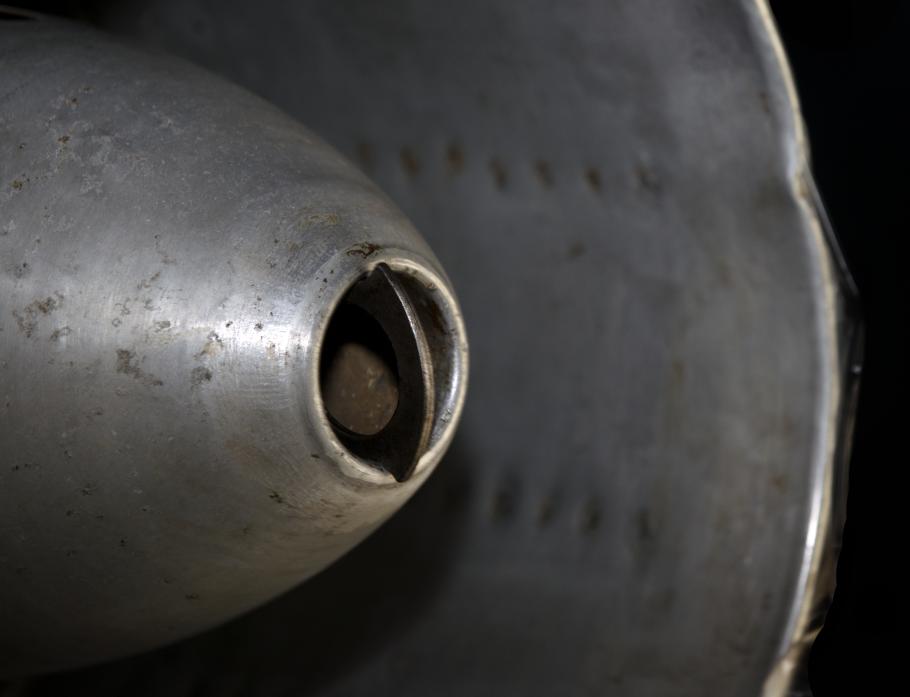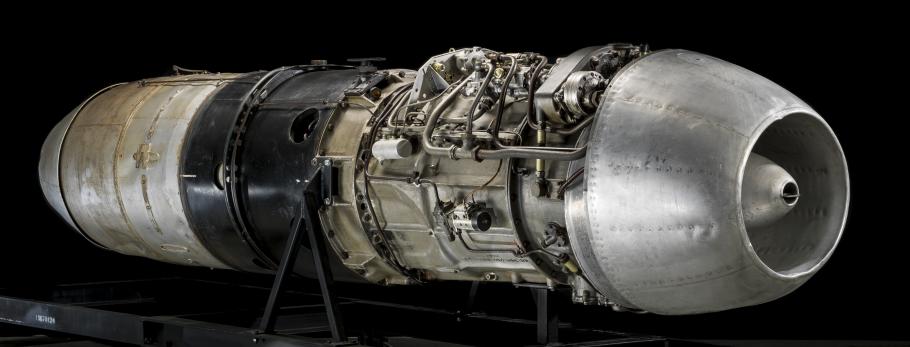Junkers Jumo 004 B4
Designed by Dr. Anselm Franz, the Junkers Jumo 004 was the world’s first mass-produced, operational turbojet engine. It was also the first turbojet in the world with axial-flow compressors, afterburning, and a variable area exhaust nozzle. The original 004 A model flew for the first time in 1942, but it was not suitable for production because it was too heavy and used alloys in short supply in Germany.
The 004 B production model was easier to manufacture, weighed less, and used air cooling for the combustor, turbine blades, and exhaust nozzle. The engine powered the Messerschmitt Me 262, the first operational jet fighter, and the Arado 234, the first operational jet bomber and reconnaissance airplane. Volume production of the 004 B began in early 1944. Junkers manufactured nearly 6,000 Jumo 004 engines by the end of World War II.
Transferred from the U.S. Air Force, Wright-Patterson Air Force Base, Ohio
Type:turbojet
Thrust/speed:8,807 N (1,980 lb) at 8,700 rpm
Compressor:8-stage axial flow
Combustor:6 straight-through chambers
Turbine:1-stage axial flow
Manufacturer:Junkers Flugzeug und Motorenwerke A.G., Dessau, Germany
A19670124000
Display Status
This object is not on display at the National Air and Space Museum. It is either on loan or in storage.
Object Details
Key Accomplishment(s)
Forerunner of the Modern Jet Engine
Brief Description
This was the world’s first mass-produced turbojet engine. Germany built nearly 6,000 Jumo 004 engines by the end of World War II. Every jet engine in the world is derived from this axial flow design.
Date
1944
Country of Origin
Germany
Type
PROPULSION-Turbines (Jet)
Designer
Dr Anselm Franz
Manufacturer
Junkers Flugzeug und Motorenwerke A.G.
Physical Description
Type: Turbojet
Thrust/speed: 8,807 N (1,980 lb) at 8,700 rpm
Compressor: 8-stage axial
Combustor: 6 straight-through chambers
Turbine: Single-stage axial
Manufacturer: Junkers Flugzeug und Motorenwerke A.G., Dessau, Germany
Dimensions
Overall: 387.3 × 253.4 × 81.3cm, 739.4kg (12 ft. 8 1/2 in. × 8 ft. 3 3/4 in. × 2 ft. 8 in., 1630lb.)
Alternate Name
Jumo 004B Engine
Inventory Number
A19670124000
Credit Line
Transferred from the U.S. Air Force, Wright-Patterson AFB, Ohio
Data Source
National Air and Space Museum
Restrictions & Rights
Usage conditions apply
For more information, visit the Smithsonians Terms of Use.






